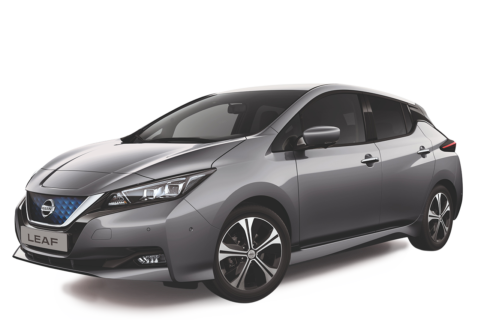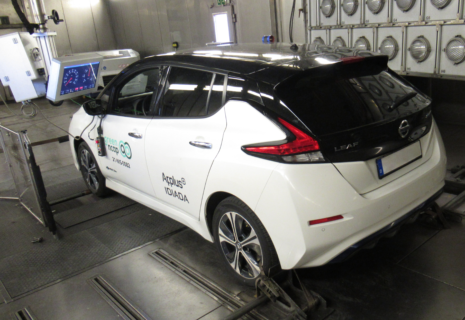Nissan LEAF e+ A03 electric 4x2 automatic
2021
99%
10.0
10
Clean Air Index
9.9
10
Energy Efficiency Index
10.0
10
Greenhouse Gas Index
| Laboratory Tests | NMHC | NOX | NH3 | CO | PN | |
|---|---|---|---|---|---|---|
| 10.010 | Cold Test | |||||
| 10.010 | Warm Test | |||||
| 10.010 | Cold Ambient test | |||||
| 10.010 | Highway | |||||
| Road test | ||||||
| 10.010 | On-Road Drive | |||||
| 8.08 | On-Road Heavy Load | |||||
| 5.05 | On-Road Light Load | |||||
| 5.05 | On-Road Short Trip | |||||
| 2.02 | Congestion | |||||
| Robustness |
| Laboratory Tests | Energy | |||
|---|---|---|---|---|
| 10.010 | Cold Test | 20.2kWh100 km | ||
| 10.010 | Warm Test | 19.1kWh100 km | ||
| 9.710 | Cold Ambient test | 32.0kWh100 km | ||
| 10.010 | Highway | 28.9kWh100 km | ||
| Consumption | Driving Range | |||
| Average | 22.7kWh100 km | 306km | ||
| Worst-Case | 32.0kWh100 km | 210km | ||
| Greenhouse Gases | CO2 | N2O | CH4 | |
|---|---|---|---|---|
| 7.07 | Cold Test | |||
| 7.07 | Warm Test | |||
| 7.07 | Cold Ambient test | |||
| 7.07 | Highway |
Specifications
- Tested Car SJNFAAZE1U010XXXX
- Publication Date 11 2021
- Vehicle Class Small Family Car
- Emissions Class Euro AX
- Tyres 215/50/R17 91V
- Mass 1,713 kg
- Engine Power/Torque 160 kW/340 Nm
- Declared battery capacity 62.0 kWh
- Published driving range 385 km



































































































































Our verdict
The latest generation Nissan LEAF e+ has a bigger battery and higher power than its predecessor. With 62 kWh of declared battery capacity and a power of 160 kW compared to the previous generation's 40 kWh and 110 kW, the latest car makes a great improvement in terms of the energy efficiency. Like the previous version, the new LEAF e+ is also equipped with the e-pedal which allows the driver to control vehicle acceleration and deceleration through a single pedal and helps maximize the car's efficiency by reducing reliance on the traditional braking system. For now, Green NCAP assesses vehicles based only on what is emitted at the tailpipe so the Nissan LEAF e+ easily gets the maximum points in two of the three areas of the assessment - Clean Air and Greenhouse Gases - as local emissions of these are zero. Since this is a pure battery electric powertrain, energy efficiency is also very high and the car easily achieves the maximum 5 stars.